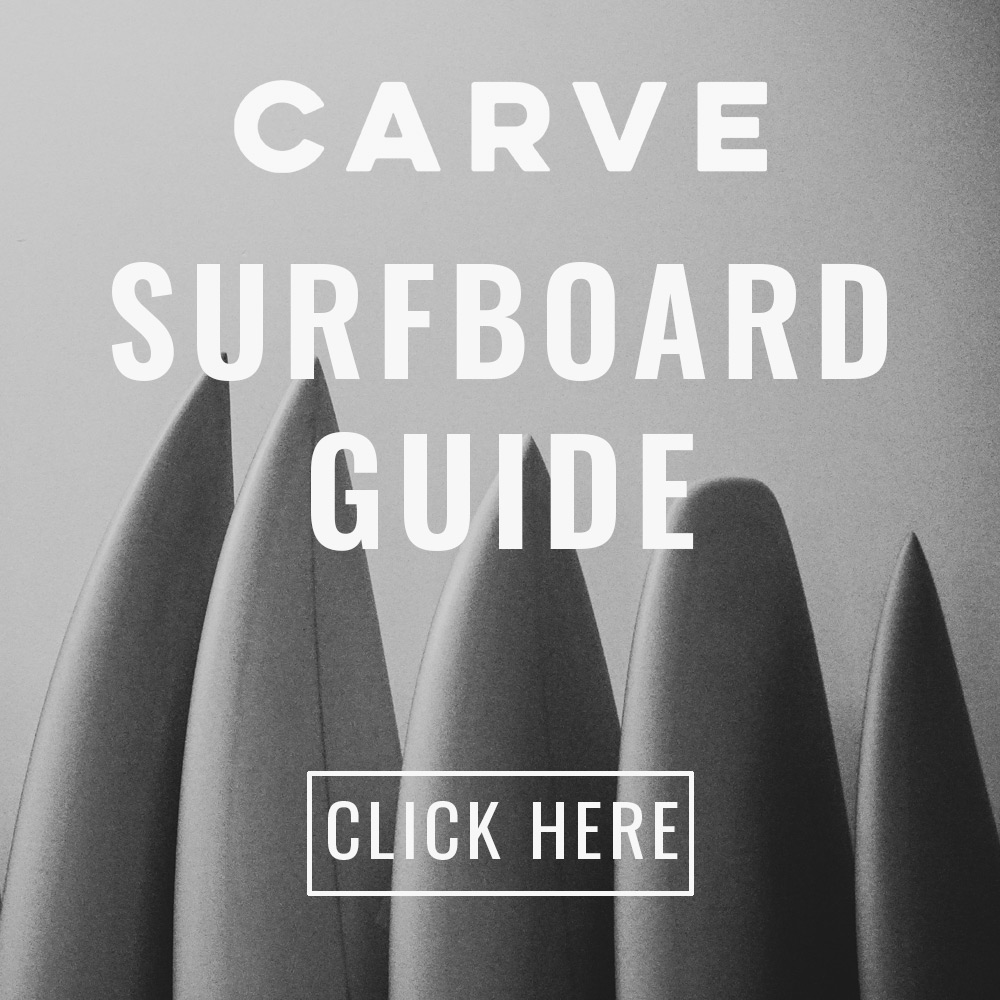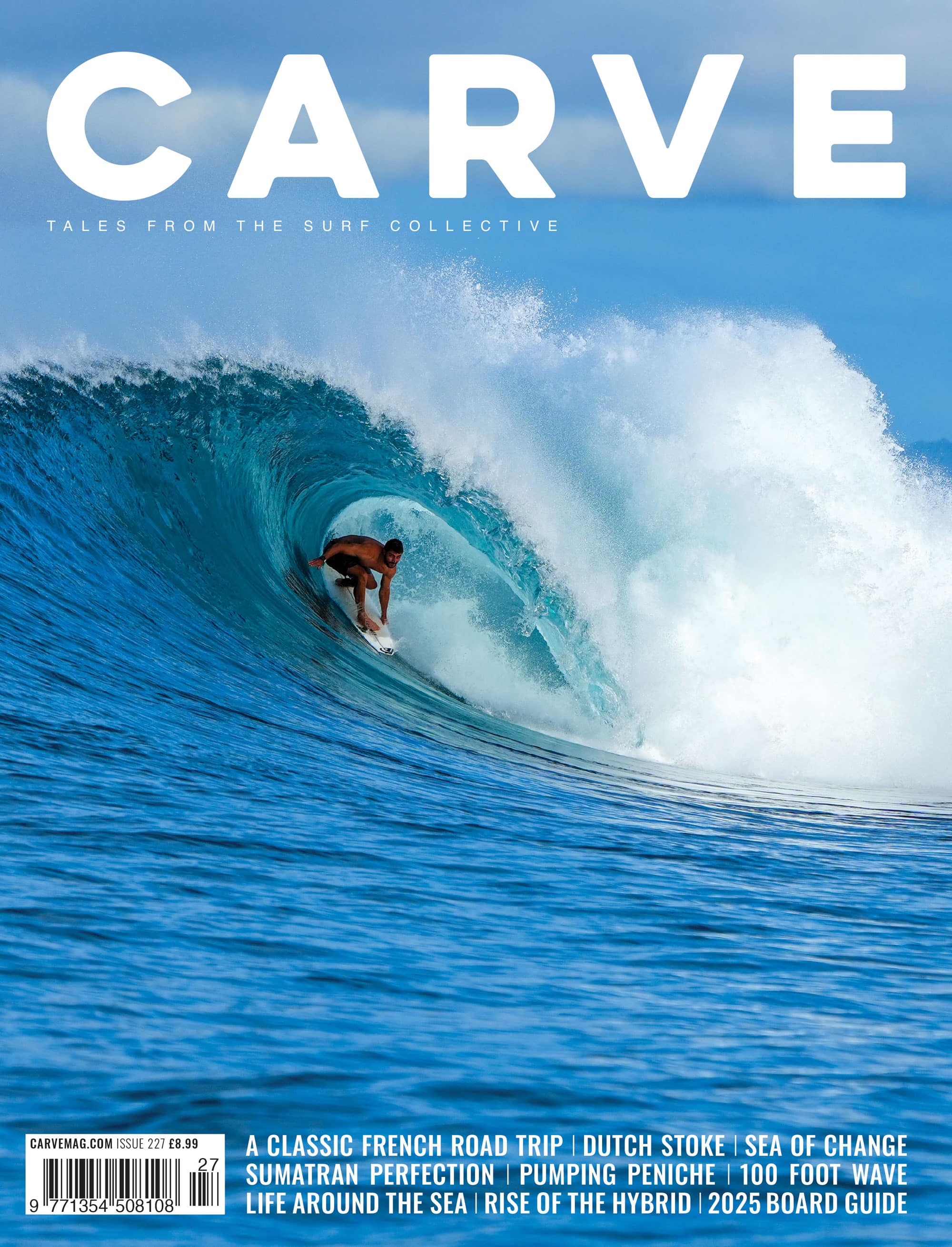Sequence: Will Bailey
This basic manoeuvre enables the surfer to change direction and return to the steepest part of the breaking wave, the pocket, without loss of speed.
There are several varieties of cutbacks, from simple carves to full figure-of-eight manoeuvres (‘roundhouse cutbacks’); the type you can perform will depend on the wave’s shape and power. Small mushy waves require small snappy cutbacks to retain maximum speed. Large powerful waves allow the surfer to go way out onto the shoulder of the wave, then accelerate through a large powerful turn back into the pocket, before slashing back around onto the wave face.
Here’s Sean Holmes performing a nice sweeping version in Indonesia. The key points to note are that he’s looking around towards the pocket (so his shoulders and torso also turn, and guide his board around), and he’s using his outside arm as the pivot point on which to base the turn.
Forehand Cutback
There’s nothing more satisfying than throwing all your speed and inertia into a smooth, flowing direction change on a nice clean shoulder.
Look at surfers like Pancho Sullivan and Andy Irons for great examples of guys who do solid carving turns. The key is to fly through the move in one motion; the movement should almost be like a swooping bird, making a precision shralp through the shoulder like a surgeon’s scalpel.
Come through your bottom turn with speed and commitment, getting low on your board, bend your knees and focus your sights for the top third of the shoulder on the edge of the pocket, this is where you will initiate your turn.
1. As I get to the top of the shoulder I redistribute my weight through my back foot and begin to lean my outside hand down the wave. My front foot is pushing against the deck of the board while I really engage my fins by applying force to my back foot. This is the beginning of the pivot so make sure that your foot is really planting the fins and the tail in to the wave.
2. I’ve dropped my outside hand in to the wave and am throwing my inside arm across my body. By turning my head, twisting my shoulders and throwing my arm in the direction that I want to go my direction change will be more pronounced. My mid section and hips will follow and I’ll really arc the board back towards the pocket and put it on a rail. My front leg is almost totally extended at this part of the turn, maximising the amount of power that I can push through the turn and exchanging my down the line speed for a hard direction turn. It’s important not to jerk your turn now, keep the flow or it will look like the turn is done in 90-degree segments.
3. My arm has come across my face now, I don’t particularly like the way this looks but it serves the purpose of driving the direction change with as much power as possible. I now begin to bend my front leg to absorb the board coming back under me, now I get chance to push the tail through the turn. As you get better at them you can push the board in to a slide here if you want to. Power gouges feel really good though.
4. My back leg is now pushing against the tail to really flare the turn and re-engage all the fins as the board comes off the rail and goes flat as it points completely the opposite direction.
5. I now get my centre of gravity as low as possible, go in to a squat and transfer my weight from leaning towards the pivot point of my left hand to get my weight on to my toes, put the board back on the rail and lean back in to the wave ready to drive out of the pocket and line up my next turn. Keep low for balance until you clear the foam and watch out for dropping sections that could knock your balance. If the section catches up with you and the foam gets under the tail of the board prepare for it to go loose, which is when you can struggle to keep your balance. Get your weight forward and on to your rail, focus down the line and choose a line that will gain you speed quickly to approach the next section.
Russ’s mini-tips:
• Use your hand as a pivot point. Imagine you are leaning down towards the concrete as you would to power slide a skateboard.
• Practice on pointbreaks like Anchor Point in Morocco, J-Bay in South Africa or La Santa Right in Lanzarote. Good carves are easier in clean, glassy waves.
• The key is to keep the turn smooth by becoming used to each of the turns movements and linking them together quickly and smoothly. You can practice the body rotation on land so that your muscle memory becomes familiar with it.
• If you are struggling to make the full rotation then try the move further out on the shoulder. If you are losing speed half way through the turn then try them in steeper sections and keep the circumference of the arc tighter.
• Remember that good surfing is centred around the pocket so it’s essential to keep as much of the turn in the steep section, they are easier to learn out on the shoulder but you should be on a constant mission to bring your turns back closer to the pocket.
• Lose your speed and you will stall, bog and go off the back of the wave so remember to swoop with your head, shoulders, arms and then if you have followed the instructions of where your legs should be you will nail the turn.





